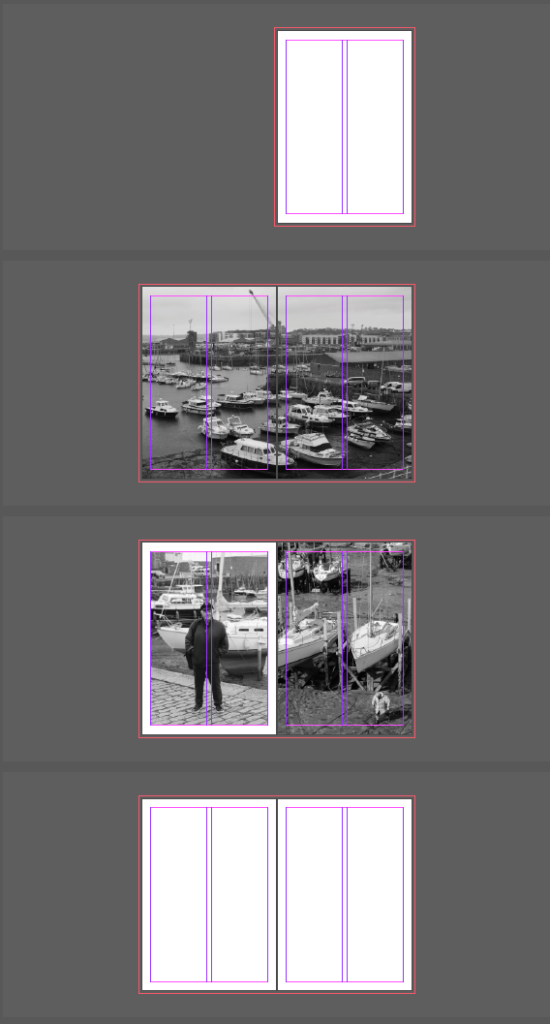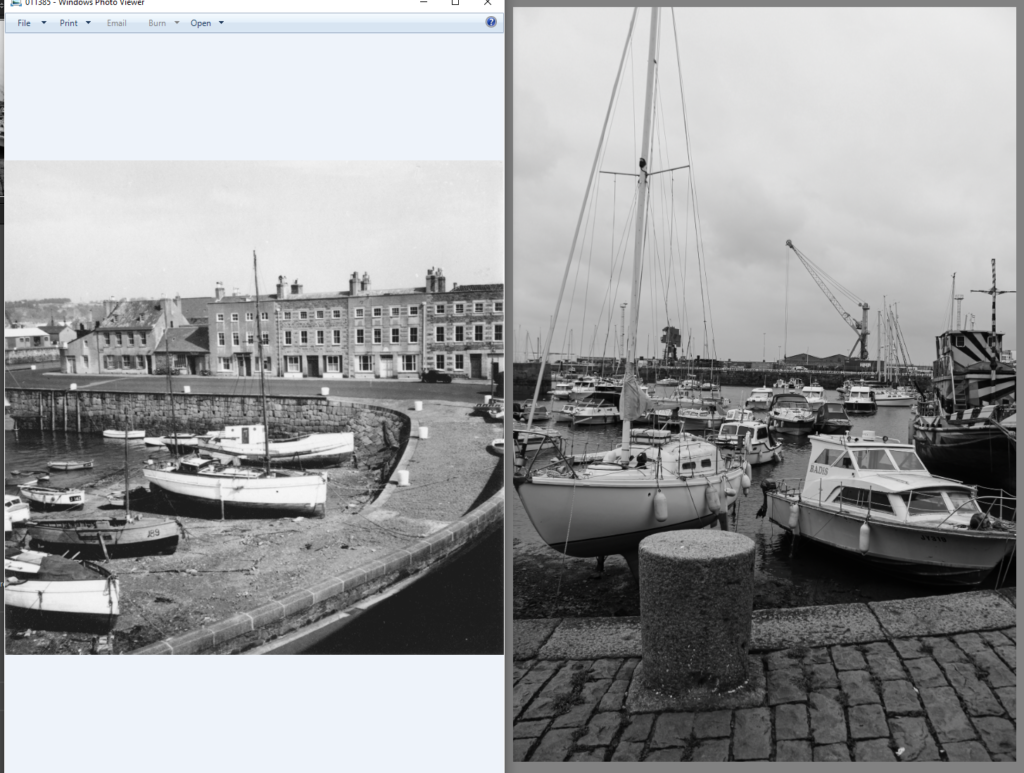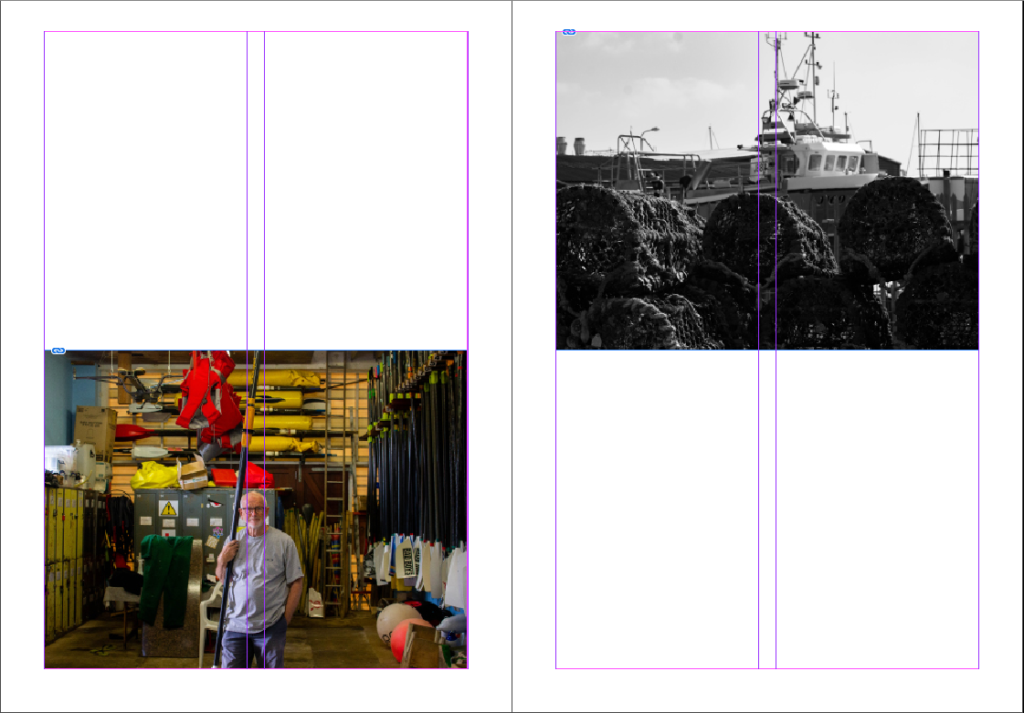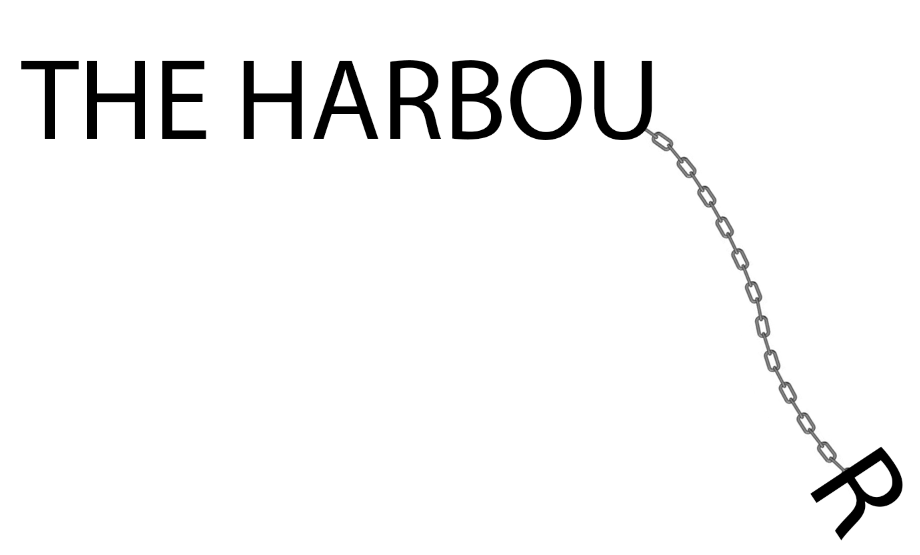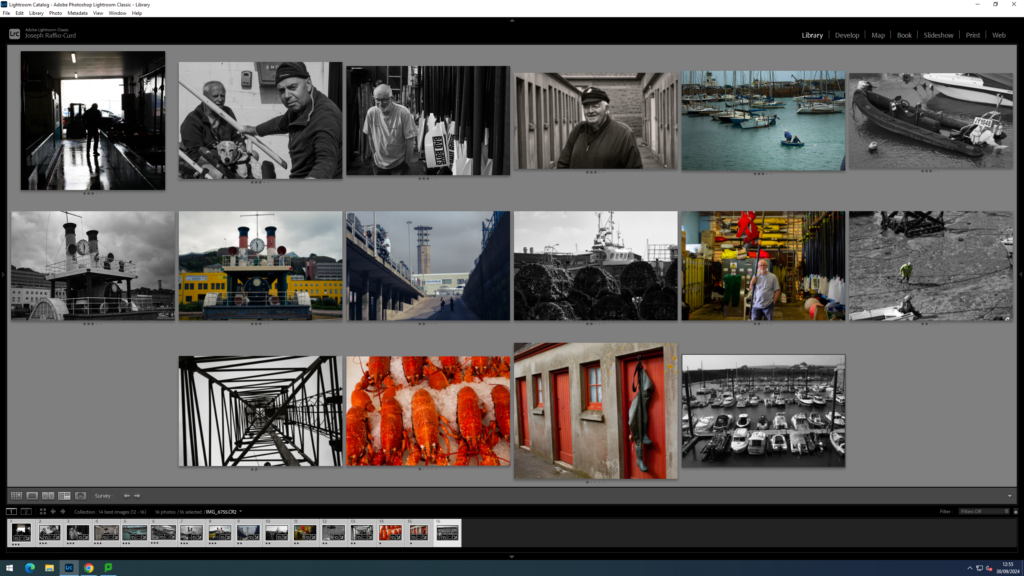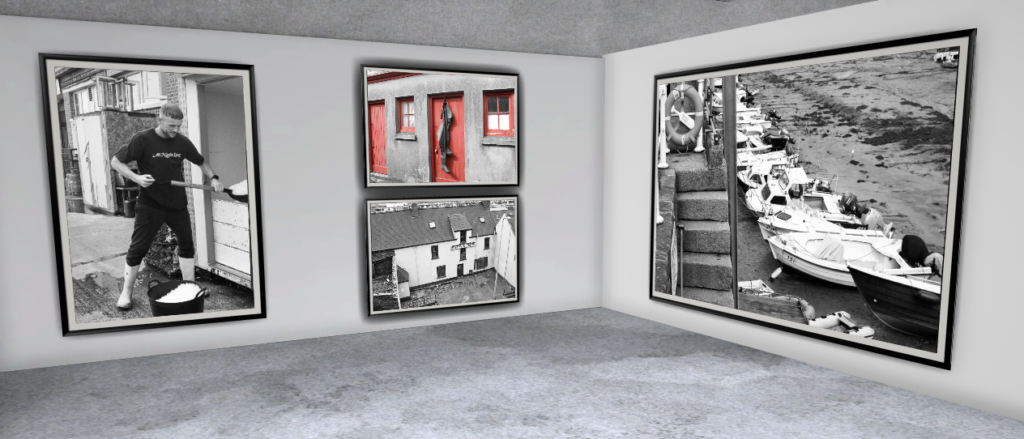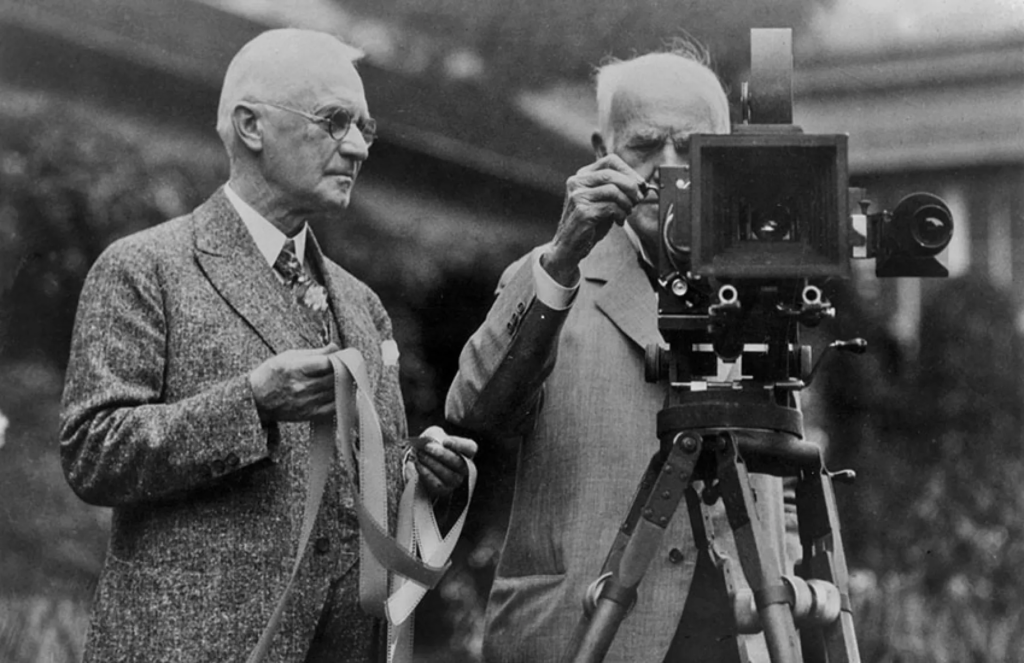Do you remember the picture of a large bay window, the first paper negative ever to be made – that we watched in the film Fixing the Shadows – episode one of the first major television series devoted to the medium of photography, The Genius of Photography.
In the summer of 1835 William Henry Fox Talbot experimented with various chemicals to develop paper coatings suitable for use in a camera. He placed small wooden cameras that his wife called “mousetraps” all over his estate. The earliest surviving paper negative dates from August 1835, a small recording of the bay window of Lacock Abbey (left). In 1978, the German photographer Floris Neusüss visited Lacock Abbey to make photograms of the same window. He returned again in 2010 for the Shadow Catchers exhibition at the V&A to create a life-sized version of Talbot’s window (below right).


That 1978 photogram was the start of our adventures in creating photograms of large objects in the places where we found them […] we took our equipment to Lacock Abbey and made a photogram of a fixed subject. This particular subject was for us not just a window in a building but an iconic window, a window on photography, opened by Talbot. The window is doubly important, because to be able to invent the photograph, Talbot first used photograms to test the light sensitivity of chemicals. His discovery became a window on the world. I wonder what percentage of our understanding of the planet we live on now comes from photographs?
— Floris Neusüss
The idea of photographs functioning like windows makes total sense. Like the camera viewfinder, windows frame our view of the world. We see through them and light enters the window so that we can see beyond. Photographs present us with a view of something. However, it might also be possible to think of photographs as mirrors, reflecting our particular view of the world, one we have shaped with our personalities, our subconscious motivations, so that it represents how our minds work as well as our eyes. The photograph’s glossy surface reflects as much as it frames. Of course, some photographs might be both mirrors and windows.
A window is a resource that offers you a view into someone else’s experience. A sliding door allows the viewer to enter the story and become a part of the world. A mirror is a story that reflects your own culture and helps you build your identity.
Photo-historian, Gerry Badger who was part of the editorial team producing the television series The Genius of Photography wrote in the introduction of the book of the same name that John Szarkowski’s distinction of photographs as ‘mirrors’ or ‘windows’ is useful, but only to a point, ‘because most photographs are both mirrors and windows.’ (Badger 2007:8)



The exhibition Mirrors and Windows, an exhibition of American photography since 1960, opened at The Museum of Modern Art, New York (MoMa) in July of 1978. The curator John Szarkowski’s attempted to categorise photographers whose work largely reflected the subjectivity of the artist in comparison with those whose work largely sought to see outside themselves. Szarkowski wrote in the catalogue essay that accompanied the exhibition:
“The two creative motives that have been contrasted here are not discrete. Ultimately each of the pictures in this book is part of a single, complex, plastic tradition. Since the early days of that tradition, an interior debate has contested issues parallel to those illustrated here. The prejudices and inclinations expressed by the pictures in this book suggest positions that are familiar from older disputes. In terms of the best photography of a half-century ago, one might say that Alfred Stieglitz is the patron of the first half of this book and Eugène Atget of the second. In either case, what artist could want a more distinguished sponsor? The distance between them is to be measured not in terms of the relative force or originality of their work, but in terms of their conceptions of what a photograph is: is it a mirror, reflecting a portrait of the artist who made it, or a window, through which one might better know the world?”
— John Szarkowski, 1978
MIRRORS AND WINDOWS has been organized around Szarkowski’s thesis that such personal visions take one of two forms. In metaphorical terms, the photograph is seen either as a mirror – a romantic expression of the photographer’s sensibility as it projects itself on the things and sights of this world; or as a window – through which the exterior world is explored in all its presence and reality.
READ a pdf of the original book Mirrors and Windows: American Photography Since 1960 here and MoMa’s original press release (1978) here. As a critical point of view read also a a review here by Jed Pearl published in the photography magazine, Aperture in spring 1878.
Take a look at the images below. Think about whether, in your opinion, they are mirrors or windows.
You could draw a horizontal line with the word ‘Mirror’ at one end and ‘Window’ at the other. You could add a list of words that help to describe what these words suggest.

Now, try placing each of these images somewhere on this spectrum. Annotate the images to explain your decisions.

Garry Winogrand – Los Angeles, 1969 Gelatin-silver print









HOMEWORK: Independent Study
TASK 1: 1000 word mini-essay
Essay question: How can photographs be both ‘mirrors’ and ‘windows’ of the world?
DEADLINE: Wed 23 OCT
Follow these instructions:
- Read two texts above (John Szarkowski’s introduction and review by Jed Pearl) and select 3 quotes form each that is relevant to your essay.
- Select two images, one that represent a mirror and another that represents a window as examples to use in your essay.
- Use some of the key words that you listed above to describe what the mirrors and windows suggest.
Essay plan
Introduction (250 words): Reflect on the origin of photography and describe in your own words the difference between the two photographic processes, Daguerreotype and Calotype. Consider how they could be viewed as either a mirror or a window of the world according to John Szarkowski’s thesis. Choose one quote from Szarkowski’s text and comment if you agree or disagree.
Paragraph 1 (250 words): Choose an image that in your view is a mirror and analyse how it is a subjective expression and staged approach to image-making. Choose one quote from Szarkowski’s thesis and another from Jed Pearl’s review which either supports of opposes Szarkowski’s original point of view. Make sure you comment to advance argumentation in providing a critical perspective.
Paragraph 2 (250 words): Choose an image that in your view is a window and analyse how it is an objective expression rooted in the notion of realism. Choose one quote from Szarkowski’s thesis and another from Jed Pearl’s review and follow similar procedure as above ie. two opposing points of view and commentary to provide a critical perspective.
Conclusion (250 words): Refer back to the essay question and write a conclusion where you summarise Szarkowski’s theory and Pearl’s review of his thesis. Describe differences and similarities between the two images above and their opposing concepts of objectivity and subjectivity, realism and romanticism, factual and fiction, public and private.
TASK 2: Photo-assignment
A creative response to documentary (realism/ factual/ public/ candid) and tableaux (romanticism/ fiction/ private/ staged) photography
DEADLINE: Fri 25 Oct
RECORDING > Based on the theme of ‘OBSERVE, SEEK, CHALLENGE’ – and with relevance to your Personal Study – produce 3 images that are documenting reality – ‘windows of the world’ and another 3 images that are staging reality – ‘mirrors of the world’.
PLANNING > Produce a blog post where you plan and sketch out a few ideas in relation to the photo-assignment. You may use some of the images or artists references we looked at earlier in the week as inspiration and put together a mood-board, that will act as inspiration for your shoot.
In the next lesson tomorrow (Wednesday) you will be given a camera to make initial responses. Be creative and use this opportunity to experiment with ideas or approaches to image-making that you might want to extend further in your Personal Study. The expectation is that you make a set of images during the lesson using the school environment (inside or outside) creatively. The photographic studio is also available where you can explore different ideas using different lighting techniques…Rembrandt lighting…Butterfly lighting…Chiaroscuro…reflected light…coloured gels etc.
DEVELOPING >In post-production you can incorporate different editing techniques…monochrome/ colour adjustments…montage/ composite…juxtaposition/ triptychs/ grids etc…using Lightroom, Photoshop, AI technology if appropriate to your intentions. The focus here is on creativity, imagination and experimentation. Add images to your essay as photographic responses to Szarkowski’s thesis and evaluate.
GUIDELINES: ESSAY WRITING

Literary Sources:
- Read key texts that will provide you with knowledge and understanding
- It demonstrates evidence of reading and will enable you to draw upon different points of view – not only your own.
- Select relevant quotes and make notes when you’re reading…key words, concepts, passages including page number
- Write down author’s name, date it was published, title, publisher, place of publication so you can list source in a bibliography
Bibliography:
List all the literary sources that you have read and arrange in alphabetical order. For example:
Szarkowski, J. (1978), Mirrors and Windows: American Photography Since 1960. Museum of Modern Art: New York
Quotation and Referencing:
Why should you reference?
- To add academic support for your work
- To support or disprove your argument
- To show evidence of reading
- To help readers locate your sources
- To show respect for other people’s work
- To avoid plagiarism
- To achieve higher marks
What should you reference?
- Anything that is based on a piece of information or idea that is not entirely your own.
- That includes, direct quotes, paraphrasing or summarising of an idea, theory or concept, definitions, images, tables, graphs, maps or anything else obtained from a source
How should you reference?
Use Harvard System of Referencing…see Powerpoint: harvard system of referencing for further details on how to use it.
Here is an full guide on how to use Harvard System of Referencing including online sources, such as websites etc.













































